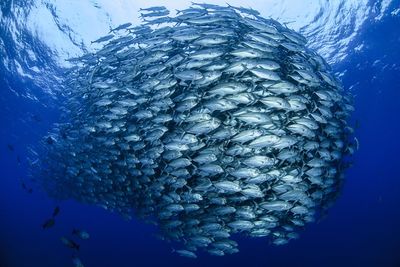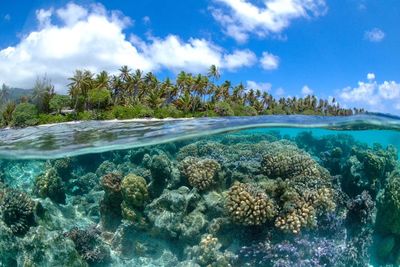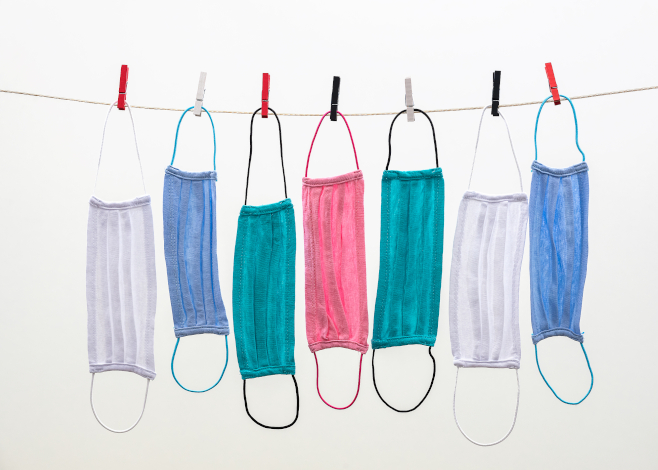A whopping 14 million viewers were wowed by the
groundbreaking docuseries, Blue Planet II, when it first aired in
2017, and people’s fascination with all things ocean-related
continues to grow, from Ocean Film Festivals popping up across the
world to power-house brands creating fashion from the ocean’s
plastic pollution. But, there’s nothing quite like seeing the magic
of the underwater world with your own eyes. Whether you’re on the
fence, have a toe in the water or are passionate about taking the
plunge, discover the top ten reasons why you should become a
certified scuba diver…

1. You Will Discover a Whole New World
Whether you dreamt about becoming an archaeologist, marine
biologist, explorer, photographer, or all the above, you can easily
fulfill all your passions in diving. Covering over 70% of the
world’s surface, the ocean is an endless playground; see the most
beautiful and fascinating creatures you never knew existed, hover
over wrecks steeped in history and marvel at kaleidoscopic cities
of coral – there is always something mind boggling to explore.

2. You Will Become Aquaman (or Woman)
To coin an old phrase, you really do have to see it to believe
it, and becoming scuba certified is practically synonymous with
becoming a POTO (Protector of the Ocean). From joining in on ocean
initiatives to collecting rubbish on your dive, becoming a citizen
scientist and so much more, you will be inspired to protect the
ocean – an Aqua(wo)man, if you will.

3. You Will Become Part of a Community
From the buddy system (divers are always paired on a dive) to
sharing a magical marine experience, there’s nothing quite like
diving for bringing people together. We may be biased, but the
diving community is well known for being a friendly bunch and you
will feel like you are part of one big fishy family. Before you
know it, you will find yourself indulging in post-dive drinks and
late evenings swapping stories about your favourite marine life and
underwater discoveries.

4. You Will Learn a Secret Language
Not to be Captain Obvious, but it’s impossible to talk
underwater (bar from a few techy tools out there), ergo divers have
their own secret language called scuba sign. The language is
universal (read: no pesky language barriers) and covers everything
from diving safety to the entire encyclopaedia of marine life –
once you get a grip on it you can have the whole conversation
underwater.

5. You Will Become Physically Fit
While we wouldn’t treat it as our only form of exercise, there
is no doubt that diving benefits your entire body. It is proven to
lower blood pressure, improve blood circulation, increase the
strength and flexibility of muscles and even burn calories; an
average 60-minute shore dive can burn up to 600 calories an hour –
similar to jogging but the pros of diving are you get to see the
cool stuff.

6. You Will Become Mentally Fit
Fact: the breathing techniques used in scuba diving are on par
with those of meditation. Focusing on the surrounding marine life
allows day-to-day issues to melt away, while taking deep, low
breaths and generally being relaxed means divers use less air.
These can improve our overall mental health and help to deal with
stressful situations in real life.

7. You Will Overcome Your Fears
While strapping a tank on your back to breathe underwater might
seem barmy, it’s one of the most exhilarating experiences out
there. Not to get overly philosophical but getting out of your
comfort zone and trying new things will teach you so much more
about yourself. Plus, you’ll be surrounded by professional dive
instructors every step of the way so that you can get comfortable
in the water.

8. You Will Learn New Skills
Diving is so much more than just learning how to use dive gear
and will see you gain a whole heap of both theoretical and
practical skills. From learning buoyancy control while floating
weightless like an astronaut, to channelling your inner science
geek uncovering the physics and physiology of scuba diving, not to
mention skills that will come handy in everyday life, such as
multi-tasking, communicating clearly, social skills and keeping a
level head.

9. It’s a Life-Long Activity
While you will need to take a refresher course (which you can do
while on holiday) if you haven’t dived for over six months, there
are no age restrictions so you can continue your diving adventure
for life (the world record is currently 96 years old). And once
you’ve gained your first certification, a whole world of other
options will unfold, from advanced certification (which we
thoroughly recommend for diving down to 30 metres) to speciality
courses, ranging from underwater photography to nitrox and
everything in between.

10. Your Holidays Will Become More Adventurous
Excuse us for a moment of unabashed self-promotion, but scuba
diving holidays are some of the most adventurous, life-changing
trips across the world; uncover secret underwater jungles in
Papua
New Guinea; dive between continents in Iceland; come
face-to-face with whale sharks the size of buses in the
Galapagos; or even head 300 metres below the ocean’s surface in
a DeepSea Submersible, to name but a few.
Discover more about the open water scuba diving course, get inspired
by our learn to dive
collections and get in touch to organise your next
adventure.







 Private Scuba Tuition – Learn Scuba Skills.
Private Scuba Tuition – Learn Scuba Skills.